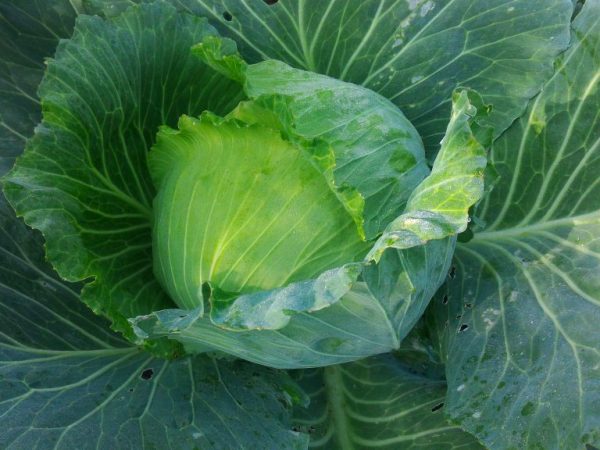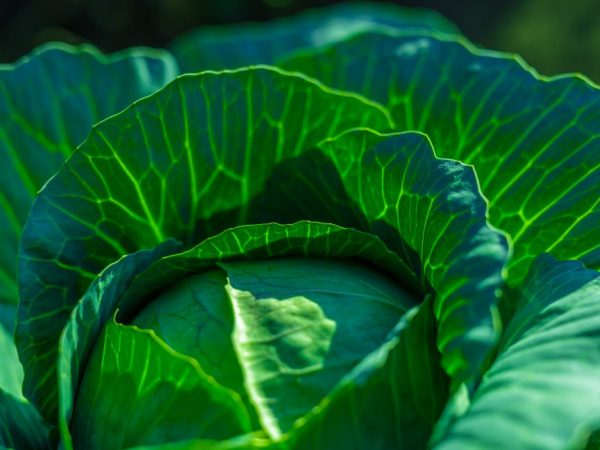Description of cabbage variety Malachite
Malachite cabbage of f1 category is one of the best varieties of Russian selection. It is characterized by high yields, long-term transportation and excellent taste, ideal for long-term storage.

Description of cabbage variety Malachite
Variety characteristic
Malachite f1 category was developed in Russia. It is suitable for cultivation in the southern and central regions of the country. The growing season is 90 days from the moment of planting in a permanent place.
The bush is not high, only 40 cm. The rosette is large, about 90 cm in diameter. The root system is developed. The outer leaves are light green and rounded. Their surface is covered with a small amount of wax, which thickens the sheet.
According to the description, the head of cabbage is round. The weight of one fruit is about 3 kg. The f1 category of white cabbage gives high yields. 400-500 kg of high-quality products are harvested from 1 hectare.
Malachite has a pleasant sweetish taste. It contains sugar, vitamin C and carotene, which has a positive effect on the condition of hair and skin.
The variety is often used for making salads. The preservation of taste is noted when salted or fermented.
Growing principle
Malachite cabbage is grown both by seedlings and by planting seeds in the soil. If you plant cabbage using the seedling method, the seeds are planted in mid-March. They are planted in a large container at a distance of 5-7 cm from each other.
The best germination rates are observed under the correct temperature conditions. For the first 20 days, seeds are germinated at a temperature of 24-26 ° C. As soon as the first shoots appear, the temperature is lowered to 15 ° C during the day, and 8 ° C at night. Planting in open ground is allowed after 2 pairs of leaves are formed on the plant. The ideal time for this is early May. Planting scheme - 50 x 60 cm.
Planting seeds in open ground is allowed only in mid-May. At this point, the risk of frost has disappeared. The distance between the seeds is 40 cm, and between the rows - 50 cm. The plot is covered with plastic wrap for better germination rates. As soon as the first shoots appear, the film is removed.
Care rules

Proper care increases crop yields
The plant needs proper care, which includes watering, weeding, and fertilizing.
Watering is carried out at intervals of 3-4 days and only with warm water. Uses a drip irrigation system for better distribution of moisture in the soil. After moistening the soil, the soil is loosened to avoid the formation of an upper crust, and weeds are removed.
Top dressing is carried out several times during the growing season:
- 20 days after planting in open ground. At this point, preference is given to organic fertilizers. They introduce 2 kg of humus and poultry droppings per 1 sq. m plot.
- At the beginning of fruiting, phosphorus components are used (20 mg per 10 l of water). At least 2 liters of the substance are poured under each bush.
Pests and diseases
The main diseases and pests of the Malachite variety: keela, tobacco mosaic, bacteriosis, aphids and flea beetles.
- Keels are disposed of with Bordeaux liquid (2 mg per 10 liters of water). Spraying is carried out with this drug every 7 days.
- In the fight against tobacco mosaic and bacteriosis, a solution of colloidal salt (10 mg per 10 l of water) is used. Spraying is carried out at intervals of 10 days.
- You can fight against aphids with the help of copper-containing preparations "Oxyhom" or "Epin" (30 mg per 10 liters of water). The bushes are sprayed every 7-10 days.
- For flea beetles, the bushes are treated with a manganese solution (1 mg per 10 liters of water). The area is sprayed every 5-7 days.
Conclusion
The main advantage of the Malachite variety is considered that it is ideal for transportation over long distances. She has a long shelf life compared to other white cabbage varieties.


